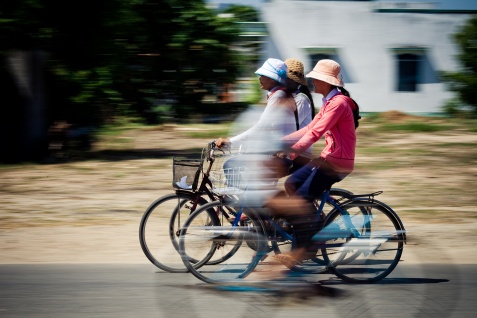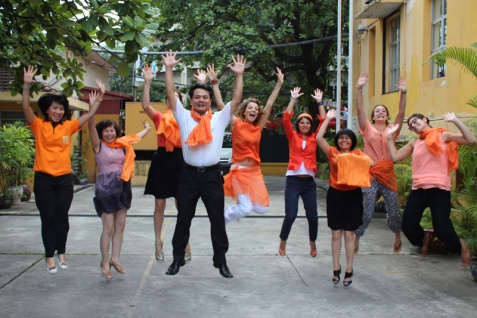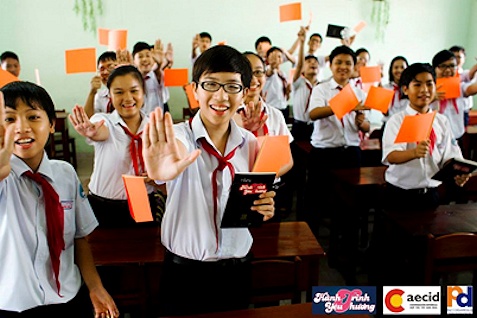Make safe spaces for women and girls in Viet Nam
Date:
“I seldom go for a walk in my ward. Sometimes, my mom asks me to buy something at a nearby shop. It is 300 meter away from my home. I am afraid of strange men and boys at tea shops on the street. They sometimes tease me with dirty words,” said T., a 13-year old girl.

Photo credit: United Nations Viet Nam
T. was one of the girls who participated in the survey assessing safety for women, “Safe and Inclusive City for Adolescent Girls,” conducted in 2012 by Plan in Viet Nam, Women in Cities International and UN Habitat. According to this assessment, 16 per cent of girls who participated in the exercise always feels safe in public spaces, only 8 per cent of them always feels safe travelling by bus and 30 per cent never feels safe while walking in their own community.
It is now recognised that many women and girls face violence, sexual harassment and abuse in public and private spaces, including workplaces, educational institutes, on streets, on public transport and even their homes. Violence and the fear of violence reduce women’s freedom of movement, limits their use of public spaces and as a results their full enjoyment of a range of human rights.
United Nations Secretary-General Ban Ki-Moon designated the 25th of every month as Orange Day to raise awareness and highlight issues relevant to preventing and ending violence against women and girls. Led by the UNiTE to End Violence against Women campaign, activities are implemented by UN country offices and civil society organisations around the world, not only on the International Day for the Elimination of Violence against Women (25 November), but every month. “Break the silence. When you witness violence against women and girls, do not sit back. Act!” said the Secretary-General at the 10th anniversary of the International Day for the Elimination of Violence against Women.

Photo credit: United Nations Viet Nam
The messages of Orange Day are monthly reminders to everybody who wants to stop gender-based violence around the world. This year the campaign focused on different themes including safe homes for women and girls, cyber space as safe space for women and girls, safe schools for girls. And today, the focus is on safe public spaces for women and girls.
Women and girls experience various types of sexual violence in public spaces including sexual harassment, rape, and femicide. This may take place on the street, on public transport, in parks, in and around schools, places of employment, and other public spaces in urban and rural areas. Some cases are publicised and receive media and public attention, while most cases go unreported and unaddressed.

Photo credit: United Nations Viet Nam
Around the world, many activities have been implemented to make cities safer for women and girls for example the Safe Cities Global Initiative launched in 2010 by UN Women, involving over 15 cities. Its programmes also engaged men and youth. In Viet Nam, local governments have committed to develop strategic and effective prevention strategies to eliminate the violence against women, for example the national law on domestic violence adopted in 2007.
Have a look at our UN Facebook Page and today's photo shoot!